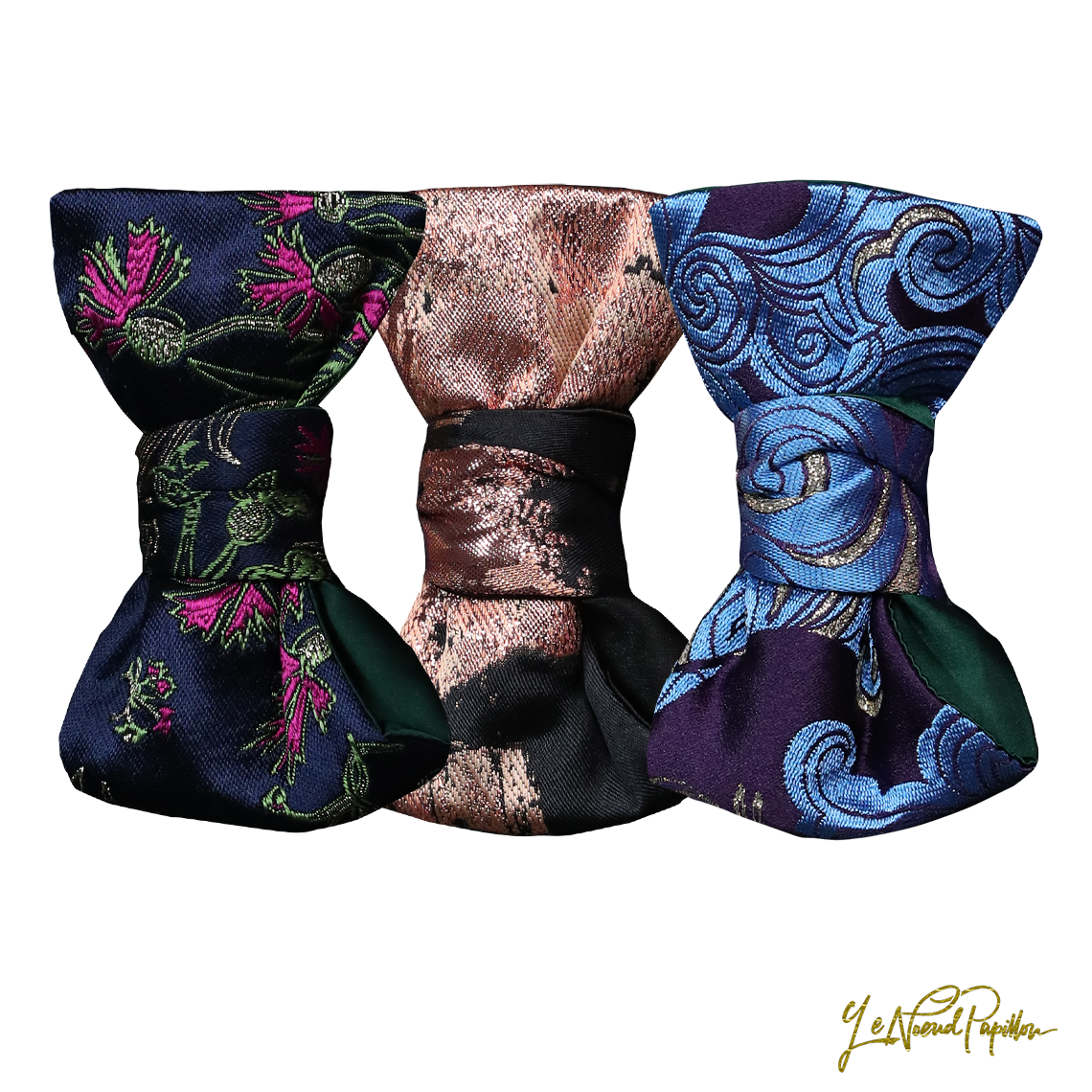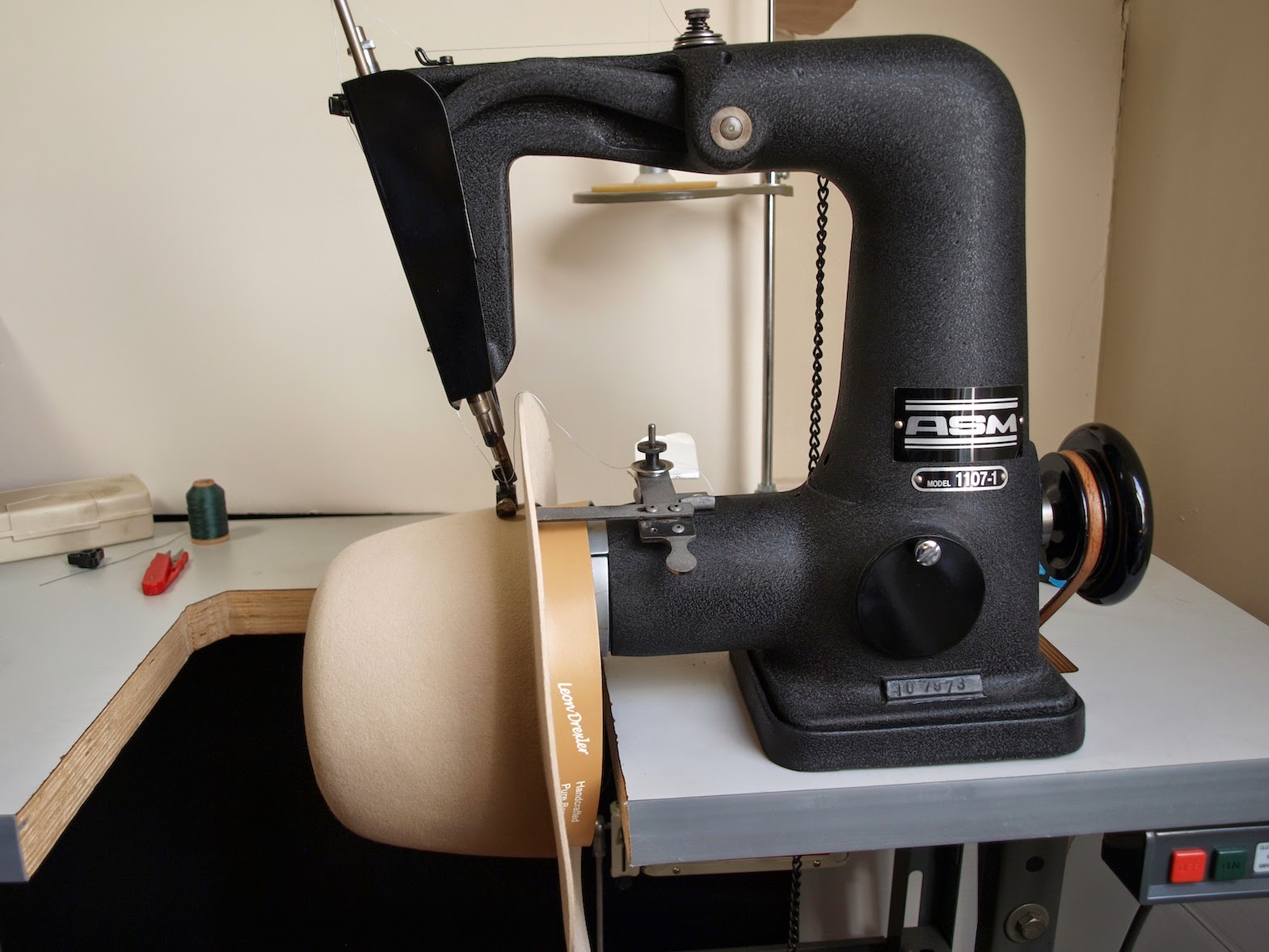In the first part of the article yesterday Stephen Temkin of Leon Drexler hats in Toronto, Canada, took us from a basic piece of beaver felt which had roughly been turned into a hood that was ready to be blocked. We then went from a hood sitting on a bench to steaming it, blocking it, pressing the crown and pressing the brim, which brings us to today's next 8 steps.
Before we begin, let me just say that I walked into my Studio at the crack of dawn this morning and there was Louis Rochechouart, my loyal man servant, standing tall and resolute and holding out Temkin's hat for me to remind me that we needed to soldier on through part II.
9:
Finishing the brim
The
pressed brim is given the same finish as the crown. Here, the brim is being
sanded or "pounced." When done, the brim will be pressed one more
time and then trimmed to the required width.
10:
Cutting the Brim
With
the band block in place, the brim cutter or "rounding jack" is set to
the desired width, then pressed up against the base of the crown and pulled
around the hat to cut an even dimension all the way around. However, for this
hat, the brass foot at the base of the jack has been adjusted so that the curve
of the foot is deeper than the side of the band block, but still shallower than
the ends (shown here without the hat of course). This means that when the jack
is pulled around the sides of the crown, the blade will be pushed slightly away
from the hat, resulting in a brim that is a little bit wider on the sides than
it is on the front and back. This is done to balance the visual width of brims
which are going to be curled, specifically if the curl on the sides is to be
pulled up more than the front and back, as will be the case with this
hat.
11:
Printing the Sweatband
A
custom inscription is printed on the sheepskin leather sweatband by means
of a manual hot foil machine and an old set of type.
12:
Sewing the Sweatband
The
sweatband is cut to the exact same circumference as the customer's head and
securely stitched together at the back. The small piece of linen tape on the
back of the rear seam is signed and shows the hat's order number.
13:
Installing the Sweatband
The
sweatband is sewn into the base of the crown using an old industrial sewing
machine designed specifically for this purpose. Once done, it's time to shape
the brim.
14:
Preparing to Curl the Brim
A
key feature of this hat will be its bound and curled brim. Here, antique
hatter's curling shackles are heated on a laboratory hotplate. The irons will
be used in conjunction with moisture and steam to manipulate the edge of the
brim.
15:
Curling the Brim
First
the hat is given its centre crease to provide a reference point for the
variation in the curl, the sides being curled up considerable more than the
front or back. Overall, the curl is made smaller than the intended result as
tension in the ribbon binding will be used to pull it up further.
16:
Basic Shaping
Using
steam and manipulation by hand, a front pinch is added to the crown and the
now-curled brim is given a fore-to-aft arc. The brim still appears wider and
the curl shallower than they will be once the binding is attached.
Part 1
Part 2
Part 3









No comments:
Post a Comment